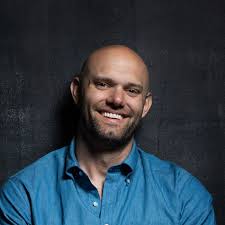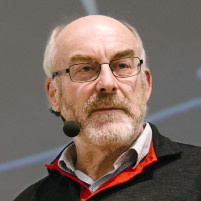Leading Organizational Change | 50 + Insights for Leaders
- Toby Sinclair
- Aug 4, 2021
- 10 min read
Updated: Aug 6, 2021

When Sathya Nadella became Microsoft CEO, he was faced with organizational dysfunction:
"Innovation was being replaced by bureaucracy. Teamwork was being replaced by internal politics. We were falling behind."
To deliver better outcomes, Nadella was the catalyst for significant organizational change. He organized Microsoft to function more like the Silicon Valley companies that were outperforming them. Reorganizing the company into cross-functional teams, abolishing the powerful product divisions for a flatter, a more integrated approach called One Microsoft.
Nadella has been credited with a grand reinvention of Microsoft. This is exemplified by its market value exceeding $1 trillion, one of just a handful in history to hit that mark. When Nadella first took over, its market value was around $300 billion. The company has shifted from a has-been to a cloud powerhouse.
This story highlights how leading organizational change can deliver great outcomes.
How can you lead organizational change?
Many organizational change efforts do not follow the success of Microsoft. Studies show that most transformations fail.
Leading organizational change over the past decade I've learned there is no silver bullet. However, there are principles that can guide your efforts. These can act as a compass, to guide your thinking and decision making.
Here I've curated these insights to help you lead organizational change.
These organizational change insights cover dilemmas such as:
What is the best organizational design? (there isn't one)
How can you change behaviour? (in small, tiny steps)
What's the best way to communicate change? (focus on safety)
Your mileage might vary depending on your context. Change is complex and there is no-one-size fits all.
I hope these insights will lead to deeper reflection on how you lead change. Inspiring you to find new perspectives.
The insights are not direct quotes. They are described in my words with attribution to the thinker who helped inspire it.
Where a person has influenced an insight their name is referenced [Name]. An emoji also indicates the medium where you can source related knowledge.
Here a just a few of the leaders who have influenced these insights:
Organizational Change Topics
50+ organizational change insights grouped into the following sections:
These 50 Coaching Tools for Leaders will also help you lead change.
Designing Organizations
I have come to learn that:
An upfront grand design does not work.
Don't ignore the existing status quo and existing power structures.
Organisations are complex, adaptive organisms.
And they are sociotechnical systems.
The purpose of a system is what it does.
You must be situationally aware.
Only four team topologies are needed for fast flow.
Define your products broadly.
Leaders must first learn to see the system.
You cannot "optimise" a complex adaptive system.
Real Teams have 6 conditions.
You can only manage 5 things in a complex system.
Systems Thinking can be a trap.
Use Reverse Conway's Manoeuvre.
#1 Organisations cannot be "designed" up-front. Instead, you should focus on the conditions that enable a new design to emerge.
[Dave Snowden] 📝
#2 Organizations are implicitly optimized to avoid changing the status quo middle- and first-level manager and “specialist” positions & power structures. Therefore, don't be surprised when the system pushes back to any changes that threaten the status quo. Also, don't be surprised despite your best efforts if the system ends back up where it started.
[Craig Larman] 📝
#3 Organisations are complex, adaptive organisms, rather than mechanistic and linear systems. This means you should change through rapid experimentation rather than big up-front designs. And any attempt to change the organisation may lead to surprising results.
[Naomi Stanford (via Team Topologies)] 📚
#4 Organisations are 'Sociotechnical Systems'. The interaction of social and technical factors creates the conditions for successful (or unsuccessful) organizational performance. As such, when exploring change explore the relationships between the technical and social system. - [Nick Tune] 🎬
#5 The purpose of a system is what it does (POSIWID). Therefore, if the system is working in what you think are ineffective ways, it's likely that is by design. The system will be meeting the needs of some people. Don't ignore this fact and trace what needs the existing system is meeting before trying to change it.
[Stanford Beer] 📝
#6 You need to be Situationally Aware. Parts of your organisation may be at different stages of evolution. As such, components should be optimised based upon context. "Agile" may not be suitable for everything and everyone across the organisation.
[Simon Wardley] 🎬
#7 If you are optimising for the flow of value there are only 4 team topologies required. [Matthew Skelton and Manuel Pais Team Topologies] 📚
#8 When you have defined products in a customer-centric manner, with a long view in mind, and as broadly as possible, structure follows the product. As such, if you want an effective Product-Centric Organisational Structure, define the Product first
#9 To create great teams focus on these 6 conditions: Real Team, Compelling Purpose, Right People, Sound Structure, Supportive Context, Team Coaching.
#10 You can only manage five things in a complex system: Constraints, Identity, Affordances, Assemblages, Attractors.
[Dave Snowden] 📝
#11 The three things organisations should have a deep understanding of Knowledge of customer demand, how to measure the system’s achievement of purpose in customer terms.
#12 You cannot "optimise" a complex adaptive system. Instead, explore through experimentation how the system is currently disposed and then 'nudge' it towards a new direction understanding the system may respond in unexpected ways.
[Toby Sinclair]
#13 Systems Thinking, whilst helpful, can lead to thinking traps that don't embrace the complex nature of organisations. As such, when doing Systems Modelling, acknowledge that things are more complex than they seem.
[Toby Sinclair]
#14 Any organization that designs a system will produce a design whose structure is a copy of the organization's communication structure. As such, implement the Reverse Conway's Manoeuvre.
[Matthew Skelton and Manuel Pais Team Topologies] 📚
Changing Behaviour
I have come to learn that:
Behaviour is a function of the environment.
People don't resist change, they resist coercion.
Inspire behaviour, don't manipulate it.
Behaviour changes in three ways.
B = MAP
Add one habit at a time, break many at a time.
Habits follow a three-step pattern.
Make the new behaviour crystal clear.
Make old behaviours impossible to do.
When unsafe, people do what they've always done.
Make consistency the goal.
#1 When the behaviour of the individual and the organisation are at odds. The behaviour of the organisation wins.
#2 People don't resist change, they resist coercion. So instead of forcing people to change, take time to listen to their concerns and co-create change with them.
[Esther Derby] 📝
#3 There are only two ways to influence human behaviour: you can manipulate it or you can inspire it. Therefore find the internal "why" that people can connect with.
#4 Behaviour Changes in 3 Ways. You can have an epiphany, change the environment or change behaviour in tiny ways. The most successful, if done consistently over time, is to change behaviour in tiny ways. It's something anyone can do.
#5 Behaviour happens when motivation & ability & prompt converge at the same moment (B = MAP). It's important to understand that motivation is fickle and prompts only work when the behaviour is easy enough to do. Therefore first focus on making the behaviour as easy as possible to do initially.
#6 A good strategy is to add new habits one at a time but break habits by stopping several at the same time.
#7 Every habit you have follows the same 3–step pattern: Reminder (the trigger that initiates the behaviour), routine (the behavior itself; the action you take), and reward (the benefit you gain from doing the behavior)
#8 Behaviour will not change if it is not crystal clear what Behaviours are expected. To make behaviours crystal clear leverage Cultural Architects within the organisation to act as role models.
#9 You need to make old behaviours impossible to do. Otherwise, in times of crisis, fear or uncertainty people will revert back to their old, default behaviour
#10 When psychological safety is low, people will be afraid to take the risk. When adopting a new, uncertain behaviour the fear of failure is always higher. If there the environment is not safe people will default to their existing, automatic behaviour. Don't expect people to change if they don't.
#11 Behaviour change takes much longer than you appreciate. It's not months but years of consistency. This can easily be demotivating so instead of focusing on the outcome focus on consistency. Make consistency the goal
[Toby Sinclair]
Managing Change
I have come to learn that:
The obstacle is the way.
Focus energy on the Early Adopters.
Avoid the workshop trap.
Don't do "Transformation Programs"
Ask more, tell less.
Don't force change.
Avoid Gap Thinking.
Change cannot be managed.
Three common reasons why relationship conflict arises.
#1 The Obstacle is the Way. The key success indicator of any change effort is how many obstacles (aka impediments) have been overcome. If you ignore the obstacles they will continue to slow down progress. It's like taking a 100mile detour rather than tackling the problem in front of you.
#2 Focus energy on the Early Adopters. Limit energy expenditure with Laggards
#3 Don't be fooled by the "workshop trap". When people leave workshops they'll likely be motivated to change the world. This kind of Motivation is fickle and will likely run dry when Monday morning arrives. Instead, focus on small changes and make the change as easy as possible to do.
#4 Don't do "Transformation Programs". Instead, focus on meaningful outcomes for the business, start small, make the desired behaviours easy to do and keep consistent over time. [Toby Sinclair]
#5 We must become better at asking and do less telling in a culture that overvalues telling. Therefore spend time asking questions rather than telling your team what to do.
#6 You cannot force another person or a system to change. We sow seeds, some fall on fertile ground, others on impenetrable soil, and yet others sprout but get overgrown by weeds. Our responsibility is to keep sowing the seeds, that is all we have control over.
#7 Avoid Gap Thinking. Don't focus on the gap between the current and target state. It's like quicksand, the more you try to move towards the target the more you are stuck in the current state. Another way is to get a grasp of your current conditions and what would be a more ideal current state. This raises awareness of what's going on now and as such a better appreciation of what needs to change.
#8 Change cannot be managed. Change is a complex process that emerges in often strange and novel ways. Therefore instead of managing change create conditions for it to emerge.
[Toby Sinclair]
#9 There are three reasons why people conflict: Lack of shared information, Disagreement about values and experiences, Personality, past history or other outside factors. When helping people navigate change help them be aware of the level the conflict. Use appropriate approaches at each level.
Measuring Change
I have come to learn that:
Minimize Outputs, Maximise Outcomes.
The easiest thing to measure gets measured.
You are incentivized to believe the things that you want to be true.
When a measure becomes a target, it ceases to be a good measure.
Four typical outcomes are Better Value, Sooner, Safer, Happier.
Optimise a system for efficiency, effectiveness will reduce.
#1 You will achieve better organisational outcomes if you Minimize Output, Maximize Outcome and Impact.
[Jeff Patton] 📝
#2 The easiest thing to measure often gets measured. As such the easiest thing to measure is often activity instead of outcomes. Outcomes are usually hard to measure. To shift the focus to measuring outcomes you have to shift the balance. Make outcomes easy to measure and activity hard to measure.
[Toby Sinclair]
#3 You are incentivized to believe the things that you want to be true. As such, if you have invested time and energy in the change you'll want to believe that change has happened. As such, whatever you do, in most cases you'll declare success.
[Charlie Munger] 📝
#4 When a measure becomes a target, it ceases to be a good measure. Therefore don't use measures as targets.
[Goodharts Law] 📝
#5 You can categorise the outcomes organisations need to work towards for success into Better Value, Sooner, Safer, Happier
#6 There are two measures that help organisational effectiveness: Capacity - The volume of demands we can service. Capability - How well we do them in eyes of the customer.
#7 If you optimise a system for efficiency, effectiveness will reduce. If you optimise a system for effectiveness, efficiency will increase.
Changing Culture
I have come to learn that:
You don't think your way into a new kind of living.
We are what we repeatedly do.
Change Behaviour to Change Thinking.
Focus on identity change by changing behaviours.
Culture is the product of constraints.
A bad system will beat a good person every time.
#1 You don't think your way into a new kind of living. You live your way into a new kind of thinking. Culture only changes when behaviour changes.
#2 We are what we repeatedly do. Excellence, then, is not an act, but a habit. Culture is the product of the habits of people within the organisation
[Not Aristotle] 📝
#3 Change Behaviour to Change Thinking. Therefore for culture to change, you must enable behaviours to change. To enable behaviours to change make it easy to do.
[John Shook] 📝
#4 Every action you take is a vote for the type of person you wish to become. No single instance will transform your beliefs, but as the votes build up, so does the evidence of your new identity. As such, focus on the consistent behaviours over time that will slowly change your organisational culture.
#5 Culture is the product of the rules, policies, procedures within the organisational environment. You might call these constraints. These influences the employee's assumptions and beliefs about "How things get done around here". These beliefs drive the employee's behaviour. To change the culture change the environment, the rules, policies etc. and make it easy for people to adopt new behaviours
[Toby Sinclair]
#7 A bad system will beat a good person every time. As such if you hire great people they may not succeed if the environment does not enable them to do so.
Leading Change
I have come to learn that:
The first follower transforms a lone nut into a leader.
The best leaders say no often.
Focus on creating the right conditions.
Be a gardener.
Be aware of your Fundamental Attribution Bias.
Start with Why.
Communicate worth and potential.
#1 The first follower transforms a lone nut into a leader. As such to build a movement you need to encourage followership as a leadership act.
[Derek Sivers] 🎬
#2 The difference between successful people and really successful people is that really successful people say no to almost everything. The best leaders say no often.
#3 Leadership is a focus on creating the right conditions in the environment for people to succeed.
#4 The temptation for leaders is to lead as a chess master, controlling each move of the organization. The best leaders act as gardeners, enabling rather than directing, creating a healthy ecosystem.
#5 Many people have a strong Fundamental Attribution Bias. The tendency for people to under-emphasize situational explanations for an individual's observed behaviour while over-emphasizing dispositional and personality-based explanations for their behaviour.
[Wikipedia] 📝
#6 We are drawn to leaders and organizations that are good at communicating what they believe. They make us feel special, safe and not alone. This is what gives them the ability to inspire us.
#7 Leadership is communicating to people their worth and potential so clearly that they are inspired to see it in themselves.
These insights are not static and will always be evolving.
Join my newsletter and each week you'll receive updates on the insights influencing my life and work.



















